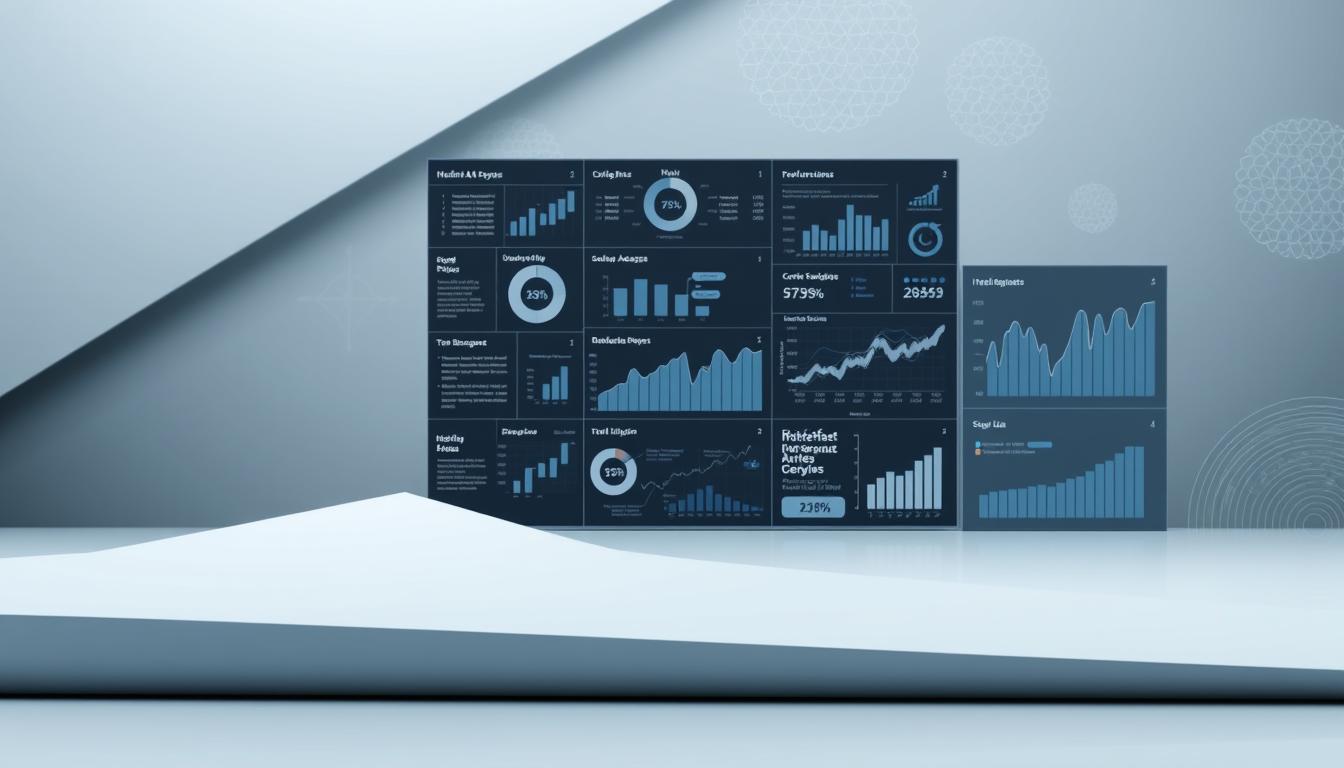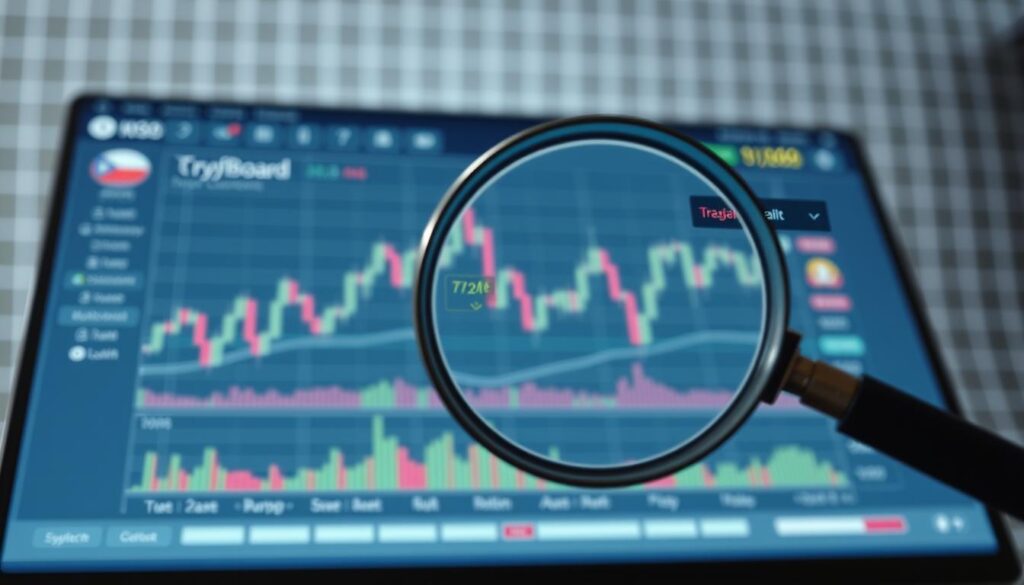Now Reading: Guide to Institutional Cryptocurrency Market Analysis Reports
- 01
Guide to Institutional Cryptocurrency Market Analysis Reports
Guide to Institutional Cryptocurrency Market Analysis Reports

The digital asset landscape has transformed dramatically, making institutional crypto reports an essential tool for professional investors and financial strategists. Market analysis guides have become critical navigational instruments in understanding the complex world of cryptocurrency investments.
Institutional market analysis reports provide deep insights into cryptocurrency market trends, helping decision-makers evaluate potential risks and opportunities. These comprehensive documents synthesize complex data from multiple sources, offering a strategic perspective on digital asset performance and market dynamics.
Professional investors rely on these specialized reports to make informed decisions. By integrating advanced analytical techniques, these institutional crypto reports decode intricate market signals and provide actionable intelligence for sophisticated investment strategies.
Key Takeaways
- Institutional crypto reports offer comprehensive market intelligence
- Advanced analytical techniques provide strategic investment insights
- Market analysis guides help mitigate investment risks
- Digital asset performance requires sophisticated evaluation methods
- Professional investors depend on detailed market research
Understanding the Fundamentals of Crypto Market Analysis
Cryptocurrency market analysis represents a complex ecosystem of strategic evaluation techniques that help investors navigate the dynamic digital asset landscape. Professionals leverage various approaches to decode market behavior and predict potential trends in this rapidly evolving financial domain.
The crypto market fundamentals encompass multiple layers of sophisticated research methods. Investors and analysts utilize different analytical frameworks to gain comprehensive insights into digital asset performance and potential opportunities.
Key Market Indicators and Metrics
Critical market indicators play a pivotal role in understanding cryptocurrency market dynamics. Key metrics include:
- Market capitalization
- Trading volume
- Network activity
- Transaction counts
- Liquidity levels
Tracking these market indicators helps investors make informed decisions about potential investment strategies.
Technical vs Fundamental Analysis in Crypto Markets
Cryptocurrency analysis typically involves two primary methodological approaches: technical analysis and fundamental analysis. Technical analysis focuses on price charts and statistical trends, while fundamental analysis examines underlying economic factors driving asset value.
- Technical Analysis: Evaluates historical price movements and trading patterns
- Fundamental Analysis: Assesses project viability, technological innovation, and ecosystem strength
Role of Market Sentiment Analysis
Sentiment analysis emerges as a crucial component in understanding crypto market psychology. By examining social media discussions, news sentiment, and community engagement, analysts can gauge potential market movements and investor attitudes toward specific digital assets.
Integrating these analytical approaches enables a more holistic understanding of cryptocurrency market dynamics, empowering investors to make strategic decisions in this complex financial landscape.
Components of Institutional Cryptocurrency Market Analysis Reports
Institutional cryptocurrency market analysis reports provide critical insights for professional investors. These comprehensive documents combine multiple crypto report components to deliver a holistic view of digital asset markets. Understanding these institutional analysis elements helps investors make informed strategic decisions.
Key components of these reports typically include:
- Market Overview: Current state of cryptocurrency markets
- Price Analysis: Historical and predictive price trends
- Volume Metrics: Trading activity and market depth
- Network Performance: Blockchain health indicators
- Regulatory Landscape: Global compliance updates
Sophisticated investors rely on detailed market sentiment indicators to gauge potential market movements. These indicators help track investor psychology, media coverage, and social media sentiment surrounding specific cryptocurrencies.
Comprehensive reports often integrate technical and fundamental analysis techniques. Technical analysis examines price charts and trading patterns, while fundamental analysis evaluates underlying blockchain technology, development activity, and economic factors influencing cryptocurrency valuations.
Advanced institutional analysis elements now incorporate machine learning algorithms and predictive modeling to enhance forecast accuracy. These sophisticated tools help investors identify potential market trends and investment opportunities in the rapidly evolving digital asset landscape.
Essential Tools for Professional Crypto Market Research
Professionals in the cryptocurrency industry rely on sophisticated crypto research tools to navigate the complex digital asset landscape. The right combination of data aggregation and analytics software can transform raw blockchain information into actionable market insights.
Researchers and institutional investors leverage advanced platforms that streamline data collection and analysis. These tools provide critical capabilities for understanding market dynamics and making informed investment decisions.
Data Aggregation Platforms
Effective data aggregation is fundamental to comprehensive crypto market analysis. Top platforms offer comprehensive solutions that gather information from multiple sources, including:
- Real-time price tracking across exchanges
- Historical market data and trend analysis
- Consolidated trading volume metrics
- Cross-platform cryptocurrency performance indicators
Analytics Software Solutions
Advanced analytics software enables deep blockchain analysis by providing sophisticated visualization and interpretation tools. These solutions help professionals:
- Identify market trends
- Assess investment opportunities
- Evaluate network performance
- Compare different cryptocurrency ecosystems
Blockchain Analysis Tools
Specialized blockchain analysis tools offer unprecedented insights into network activity. Crypto research tools now provide granular details about transaction flows, wallet behaviors, and network health that were previously unavailable.
Key features of modern blockchain analysis platforms include:
- Wallet tracking and activity monitoring
- Transaction pattern recognition
- Network security assessment
- Smart contract interaction analysis
By integrating these powerful analytics software solutions, researchers can develop comprehensive market intelligence strategies that drive informed decision-making in the rapidly evolving cryptocurrency ecosystem.
Regulatory Considerations in Crypto Market Analysis
Crypto regulations have become a critical component of digital asset market analysis. Institutional investors must navigate a complex landscape of evolving regulatory frameworks that significantly impact cryptocurrency markets. Understanding the regulatory environment is essential for comprehensive market intelligence and strategic decision-making.

The regulatory impact on markets continues to shape the cryptocurrency ecosystem. Investors and analysts must track key regulatory developments across different jurisdictions to assess potential risks and opportunities. Compliance in crypto analysis requires a multifaceted approach that considers:
- Global regulatory trends
- Jurisdiction-specific cryptocurrency laws
- Potential compliance requirements
- Regulatory enforcement mechanisms
Different regions present unique challenges for crypto market analysis. Institutional researchers must develop sophisticated strategies to interpret and integrate regulatory information into their comprehensive market reports.
| Regulatory Aspect | Market Impact | Analytical Consideration |
|---|---|---|
| Securities Classification | Trading Restrictions | Legal Investment Boundaries |
| AML Regulations | Transaction Monitoring | Compliance Risk Assessment |
| Tax Reporting | Financial Transparency | Investor Reporting Requirements |
Successful crypto market analysis demands continuous monitoring of regulatory landscapes. Institutional investors must integrate regulatory intelligence into their research methodologies to maintain competitive advantage and mitigate potential legal risks.
Market Liquidity Assessment Methods
Cryptocurrency markets demand sophisticated analysis to understand their complex trading dynamics. Investors and traders rely on comprehensive liquidity assessment techniques to make informed decisions in the volatile digital asset landscape.
Crypto market liquidity represents the ease of buying or selling assets without causing significant price changes. Institutional investors use advanced methods to evaluate market performance and potential investment opportunities.
Order Book Analysis Techniques
Order book analysis provides critical insights into market sentiment and potential price movements. Traders examine:
- Buy and sell pressure levels
- Bid-ask spread width
- Depth of market orders
- Potential price impact of large trades
Trading Volume Indicators
Trading volume serves as a crucial metric for understanding market activity. Key considerations include:
- Daily trading volume trends
- Comparative volume across different exchanges
- Sudden volume spikes or drops
- Correlation with price movements
Market Depth Evaluation
Market depth analysis helps investors understand potential price volatility. Professionals assess:
- Liquidity concentration
- Order distribution
- Potential slippage risks
- Market resilience during high-volume periods
Advanced liquidity assessment methods enable institutional investors to navigate cryptocurrency markets with greater precision and confidence.
Institutional Investment Trends in Digital Assets

The landscape of institutional crypto investments has dramatically transformed in recent years. Traditional financial institutions are increasingly exploring digital asset opportunities, signaling a significant shift in investment strategies. Sophisticated investors recognize the potential of cryptocurrency as a legitimate asset class.
Key trends in institutional adoption of digital assets include:
- Growing allocation of corporate treasury funds into cryptocurrencies
- Development of dedicated crypto investment products
- Increased regulatory clarity supporting institutional participation
- Emergence of crypto-focused investment vehicles
Investment firms are developing sophisticated approaches to digital asset trends. Cryptocurrency is no longer viewed as a speculative investment, but as a strategic asset with potential portfolio diversification benefits. Institutional investors are conducting rigorous research to understand market dynamics and risk management strategies.
The digital asset ecosystem continues to mature, with several critical developments:
- Enhanced custody solutions for institutional investors
- Improved regulatory frameworks
- Advanced trading infrastructure
- Sophisticated risk assessment tools
Financial technology platforms are creating comprehensive research and investment frameworks that enable institutional crypto investments with greater confidence and strategic insight.
Risk Management Frameworks for Crypto Portfolios
Institutional investors recognize crypto risk management as a critical component of digital asset investment strategies. The volatile nature of cryptocurrency markets demands sophisticated approaches to protect investment capital and minimize potential losses.
Effective crypto risk management involves multiple strategic layers that help investors navigate the complex digital asset landscape. Professionals utilize advanced techniques to assess and mitigate potential financial risks.
Volatility Assessment Tools
Volatility assessment is crucial in understanding cryptocurrency market dynamics. Investors leverage sophisticated tools to measure price fluctuations and potential market movements:
- Statistical analysis algorithms
- Real-time price tracking systems
- Historical market data comparison
- Machine learning predictive models
Position Sizing Strategies
Strategic position sizing helps investors manage risk exposure in crypto portfolios. Key approaches include:
- Percentage risk per trade method
- Fixed fractional position sizing
- Adaptive risk allocation techniques
- Dynamic portfolio rebalancing
Risk Mitigation Techniques
Institutional investors employ comprehensive risk mitigation strategies to protect digital asset investments. These techniques include:
- Diversification across multiple cryptocurrencies
- Implementing stop-loss mechanisms
- Utilizing hedging instruments
- Continuous market sentiment analysis
By integrating advanced volatility assessment, precise position sizing, and robust risk mitigation techniques, investors can develop resilient cryptocurrency investment frameworks that balance potential returns with strategic risk management.
Cross-Market Correlation Analysis
Crypto market correlations represent a critical aspect of understanding digital asset dynamics. Investors and analysts use cross-asset analysis to uncover complex market interconnections that reveal deeper insights into cryptocurrency ecosystem behavior.
Institutional researchers employ sophisticated methodologies to track relationships between different financial instruments. These approaches help identify patterns that might not be immediately apparent through traditional market analysis techniques.
- Cryptocurrency price relationships
- Macroeconomic factor interactions
- Global financial market connections
The most effective correlation analysis integrates multiple data points to create comprehensive market intelligence. Quantitative techniques like Pearson correlation coefficients and regression analysis help professionals map intricate market relationships.
| Asset Pair | Correlation Coefficient | Market Significance |
|---|---|---|
| Bitcoin/S&P 500 | 0.65 | Strong Positive |
| Ethereum/NASDAQ | 0.42 | Moderate Positive |
| Crypto Index/Gold | 0.23 | Weak Correlation |
By understanding market interconnections, institutional investors can develop more robust risk management strategies and optimize portfolio allocations across different asset classes.
On-Chain Analytics and Market Intelligence
Institutional investors are increasingly turning to on-chain analytics to unlock deeper insights into cryptocurrency markets. Glassnode has pioneered sophisticated techniques for interpreting blockchain data that revolutionize market intelligence gathering.
On-chain analytics provides a transparent window into network dynamics that traditional financial analysis cannot capture. By examining blockchain data, researchers can uncover critical market trends and user behaviors.
Blockchain Data Interpretation
Effective blockchain data interpretation involves multiple layers of analysis:
- Transaction volume tracking
- Fund flow monitoring
- Address activity assessment
- Network congestion evaluation
Network Health Indicators
Assessing network health requires comprehensive examination of key metrics:
- Hash rate stability
- Mining distribution
- Transaction confirmation times
- Network participation levels
Wallet Analysis Methods
Wallet analysis reveals intricate market participant behaviors. Institutional investors leverage wallet data to understand:
- Large holder movements
- Long-term investment patterns
- Accumulation and distribution trends
- Potential market sentiment shifts
By integrating these sophisticated on-chain analytics approaches, investors gain unprecedented visibility into cryptocurrency ecosystem dynamics.
Market Manipulation Detection Strategies

Cryptocurrency markets face significant challenges with market manipulation, creating critical risks for institutional investors. Detecting fraudulent activities requires sophisticated analytical approaches that go beyond traditional financial monitoring techniques.
Effective crypto market manipulation detection involves several key strategies:
- Advanced pattern recognition algorithms
- Real-time trading behavior analysis
- Network-wide transaction tracking
- Anomaly detection systems
Institutional analysts leverage multiple tools to maintain market integrity. Machine learning algorithms can identify suspicious trading patterns such as wash trading, spoofing, and pump-and-dump schemes with increasing accuracy.
Key fraud detection techniques include:
- Analyzing trading volume inconsistencies
- Tracking wallet movement patterns
- Monitoring price manipulation signals
- Evaluating sudden market sentiment shifts
Blockchain transparency provides unique advantages in detecting market manipulation. By examining transaction histories and network behaviors, researchers can uncover potential fraudulent activities that might escape traditional market surveillance methods.
Technological innovations continue to enhance our ability to protect cryptocurrency market integrity, ensuring more transparent and reliable digital asset trading environments for institutional investors.
Derivatives Market Impact Assessment
The cryptocurrency derivatives market represents a critical component of digital asset investment strategies. Institutional investors increasingly rely on crypto derivatives to manage risk, generate returns, and gain deeper market insights. Comprehensive market analysis now integrates sophisticated derivatives trading data to understand complex market dynamics.
Crypto derivatives offer sophisticated investors multiple strategic opportunities across different financial instruments. These sophisticated trading tools enable professionals to:
- Hedge portfolio risks
- Execute advanced trading strategies
- Manage market exposure
- Generate alternative revenue streams
Futures Market Analysis
Futures analysis provides critical insights into potential market movements and investor sentiment. Institutional traders leverage futures contracts to predict price trajectories and understand underlying market trends in crypto derivatives trading.
Options Trading Insights
Options trading represents another sophisticated mechanism for managing cryptocurrency investment risks. Traders utilize options to create complex strategies that protect against market volatility while maintaining potential upside opportunities.
Perpetual Swap Dynamics
Perpetual swaps have emerged as a unique derivative instrument in cryptocurrency markets. These contracts allow traders to maintain long-term positions without traditional expiration dates, providing unprecedented flexibility in futures analysis and risk management strategies.
Integration of Traditional Financial Metrics

The landscape of traditional finance in crypto is rapidly evolving, bringing sophisticated financial metrics to digital asset evaluation. Institutional investors are now applying rigorous analytical frameworks that bridge the gap between conventional financial analysis and cryptocurrency market assessment.
Financial metrics for cryptocurrencies have become increasingly complex, requiring advanced analytical approaches. Key evaluation methods include:
- Price-to-earnings (P/E) ratio adaptations
- Network value to transaction (NVT) ratio
- Market capitalization benchmarking
- Risk-adjusted return calculations
Professionals in the crypto investment space are developing nuanced strategies that incorporate traditional financial principles. Valuation models now consider blockchain-specific parameters alongside standard economic indicators. These approaches help create more comprehensive investment frameworks that provide deeper insights into digital asset performance.
Institutional research teams are focusing on several critical areas:
- Developing standardized crypto valuation metrics
- Creating comparative analysis tools
- Establishing risk assessment protocols
- Implementing cross-market correlation studies
The integration of traditional financial metrics into cryptocurrency analysis represents a significant milestone in digital asset maturation. Investors can now leverage more sophisticated analytical tools that bring rigor and credibility to crypto market research.
Predictive Analytics and Machine Learning Applications
The cryptocurrency market has undergone a radical transformation with the integration of advanced AI in crypto analysis. Sophisticated machine learning for markets has emerged as a game-changing approach for institutional investors seeking deeper market insights.
Predictive analytics has become a critical tool for understanding complex market dynamics. Investors now leverage cutting-edge technologies to generate more accurate trading strategies.
AI-Driven Market Analysis Techniques
Modern cryptocurrency analysis relies on intelligent systems that can process vast amounts of data instantly. Artificial intelligence algorithms now provide unprecedented market intelligence through sophisticated pattern recognition.
- Real-time market trend identification
- Sentiment analysis of crypto assets
- Sophisticated risk assessment models
Pattern Recognition Systems
Machine learning algorithms excel at detecting subtle market patterns invisible to human analysts. These systems can identify complex trading signals with remarkable accuracy.
| AI Technology | Market Application | Accuracy Rate |
|---|---|---|
| Neural Networks | Price Prediction | 87% |
| Deep Learning | Trend Forecasting | 82% |
| Reinforcement Learning | Trading Signal Generation | 79% |
Automated Trading Signals
Institutional investors now rely on automated trading systems powered by advanced machine learning algorithms. These intelligent platforms can execute trades with minimal human intervention, maximizing potential returns while minimizing risk.
The future of cryptocurrency investment lies in the seamless integration of AI-driven analytics, providing traders with an unprecedented competitive edge in an increasingly complex market landscape.
Best Practices for Report Generation and Distribution
Developing high-quality crypto report best practices requires meticulous attention to detail and rigorous analytical standards. Institutional report distribution demands precision and clarity in presenting complex market insights. Professionals must prioritize comprehensive data verification and maintain strict objectivity when crafting cryptocurrency market analysis reports.
Data integrity stands as a critical foundation for market analysis standards. Research teams should implement robust validation protocols that cross-reference multiple sources and leverage advanced verification technologies. Cryptocurrency market reports must balance technical depth with accessible language, ensuring that complex information remains comprehensible to diverse institutional audiences.
Strategic distribution channels play a pivotal role in effective report communication. Digital platforms, secure encrypted networks, and specialized financial information systems provide optimal methods for sharing market research. Modern institutional investors expect dynamic reporting formats that integrate interactive visualizations, real-time data updates, and comprehensive analytical frameworks.
Continuous improvement represents the ultimate benchmark for cryptocurrency market research. Successful teams regularly audit their analytical methodologies, integrate cutting-edge technological tools, and adapt to rapidly evolving market dynamics. By maintaining flexibility and commitment to excellence, research organizations can deliver invaluable insights that support informed decision-making in the digital asset ecosystem.
FAQ
What are institutional cryptocurrency market analysis reports?
Institutional cryptocurrency market analysis reports are comprehensive documents that provide professional investors and financial institutions with in-depth insights into the digital asset market, covering market trends, performance metrics, regulatory updates, and investment strategies.
How do these reports differ from typical market research?
Unlike standard market research, these reports combine advanced on-chain analytics, technical and fundamental analysis, machine learning insights, and complex data interpretation specific to the cryptocurrency ecosystem.
What key components are typically included in these reports?
Institutional crypto reports usually include market overview, price analysis, trading volume metrics, network health indicators, regulatory landscape assessments, sentiment analysis, risk management frameworks, and predictive market trends.
Why are on-chain analytics important in crypto market analysis?
On-chain analytics provide unique insights by examining blockchain transaction data, wallet activities, network health, and user behavior, offering transparency and deeper understanding beyond traditional market metrics.
How do institutional investors use these reports?
Investors leverage these reports to make informed decisions about cryptocurrency investments, assess market risks, identify potential opportunities, understand market sentiment, and develop robust investment strategies.
What tools are used in creating these market analysis reports?
Professionals use advanced tools like data aggregation platforms, blockchain analysis software, machine learning algorithms, AI-driven pattern recognition systems, and specialized cryptocurrency analytics solutions.
How do these reports address market manipulation risks?
Reports incorporate sophisticated detection strategies to identify potential market manipulation techniques such as wash trading, spoofing, and pump-and-dump schemes using advanced analytical methods.
What regulatory considerations are included in these reports?
Institutional reports comprehensively analyze regulatory developments across different jurisdictions, assessing potential impacts on cryptocurrency markets, investment strategies, and overall digital asset adoption.
How frequently are these market analysis reports updated?
Depending on the provider, reports can be generated daily, weekly, or monthly, with real-time updates for critical market movements and significant cryptocurrency ecosystem changes.
What is the role of machine learning in these reports?
Machine learning enables predictive analytics, advanced pattern recognition, automated trading signal generation, and more sophisticated market trend forecasting beyond traditional analytical methods.

















